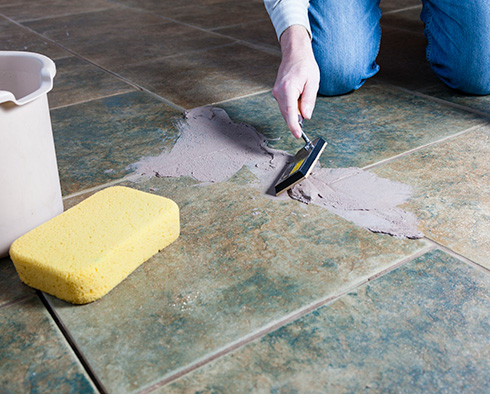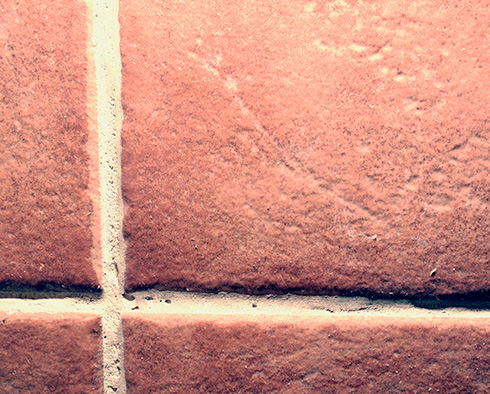No Crying Over Spilled Bleach
March 16, 2015
Accidents happen, we all know that, but what can you do when bleach gets spilled on your polished marble countertop?Glen Anschutz of Marlborough, CT, knew exactly what to do: Call Sir Grout! About two months ago, Glen was in need of a Marlborough Stone Honing and polishing company, and he decided to contract Sir Grout of Hartford to do the job. We removed scratches and etch marks from the marble floors and countertops in his master bathroom in order to transform his beautiful natural stone surfaces back to like new condition and leave his spacious, elegant master bathroom suite once again gleaming.

Unfortunately, not long after, a spilled jug of laundry bleach created a disastrous puddle on his recently restored marble. Although the bleach was quickly wiped up, the damage had already been done. Within minutes, the bleach had etched Glen's brown Emperador marble, resulting in an unattractive white blotch being left behind on its polished surface. (See "Before" side of the photo.) Normal marble cleaners didn't help at all.
"I tried everything I could think of, but couldn't get that etch mark out," Glen explained. "We were so upset about it, having just recently restored the whole thing. I really didn't know if it could be fixed, but I called Rod Carnes at Sir Grout of Hartford to see if he could help us. I figured that if he couldn't fix it, I'd have to buy new countertops."
Glen scheduled an appointment with us that same week in hopes we'd be able to rescue it. Upon seeing the damage, I informed Glen that I was certain it could be fixed. Although the damage ran deep, hope was not lost.
To begin the project, we started by honing the marble. The purpose of this step was to remove any surface damage and to make the stone super smooth in order to prepare it for the second step: polishing. Spending adequate time on the honing step would ensure the stone would end up having not just a nice shine, but also a deeper clarity. We worked away at the marble and, after about an hour of diamond honing the countertop using finer and finer abrasives, the surface finally reached the desired smoothness.
Next, we needed to polish Glen's marble. To do so, we used fine marble polishing powder to shine the surface, and then carefully blended the worked-on area in with the rest of the countertop. Presto! The damage was gone and no one could tell it had ever been there. (See "After" side of the photo). The light spots are a reflection of the overhead lighting, which confirms that the marble's clarity and shine have been fully restored.)
Of course, before leaving the scene, I applied a high quality penetrating sealer to the marble. After allowing sufficient time for it to thoroughly penetrate the stone, I buffed the newly restored marble to provide it with a well-protected finish.
Since the stone had previously been 'sealed', how was the bleach able to damage it? Well, penetrating sealers are designed to act as a protective barrier against common stains and dirt, but when the marble interacts with an acidic product, such as vinegar or toilet bowl cleaners, or with caustic chemicals like bleach, the stone itself is deteriorated, not just stained, and sealers are incapable of protecting against these corrosive attacks.
So, marble owners, take note: Keep the bleach in the laundry room and call Sir Grout when you need your marble, limestone, or travertine restored!
If you found this article helpful then let us know in the comments section below. Likewise, feel free to share it using the share options below. Want us to cover another topic of your interest pertaining to Hard Surface Restoration? If so, then like us and follow us on social media, and post to any of our social media profiles the topic you'd like us to discuss: Facebook Sir Grout Hartford, Instagram @sirgrout, and Twitter @SirGrout.







